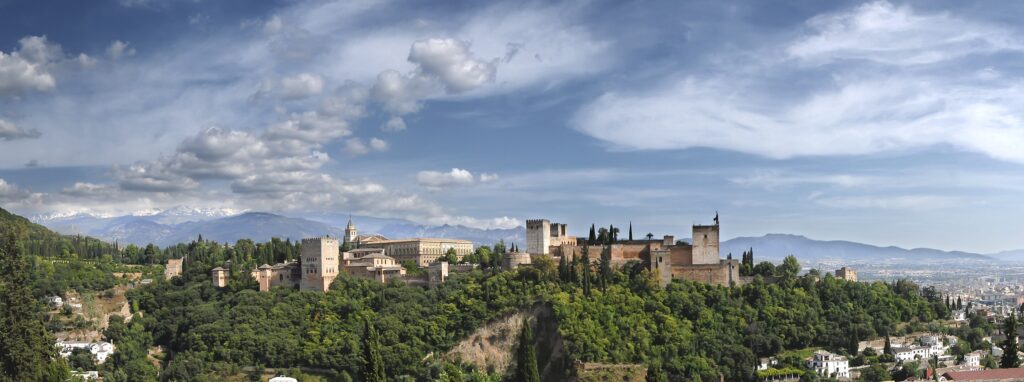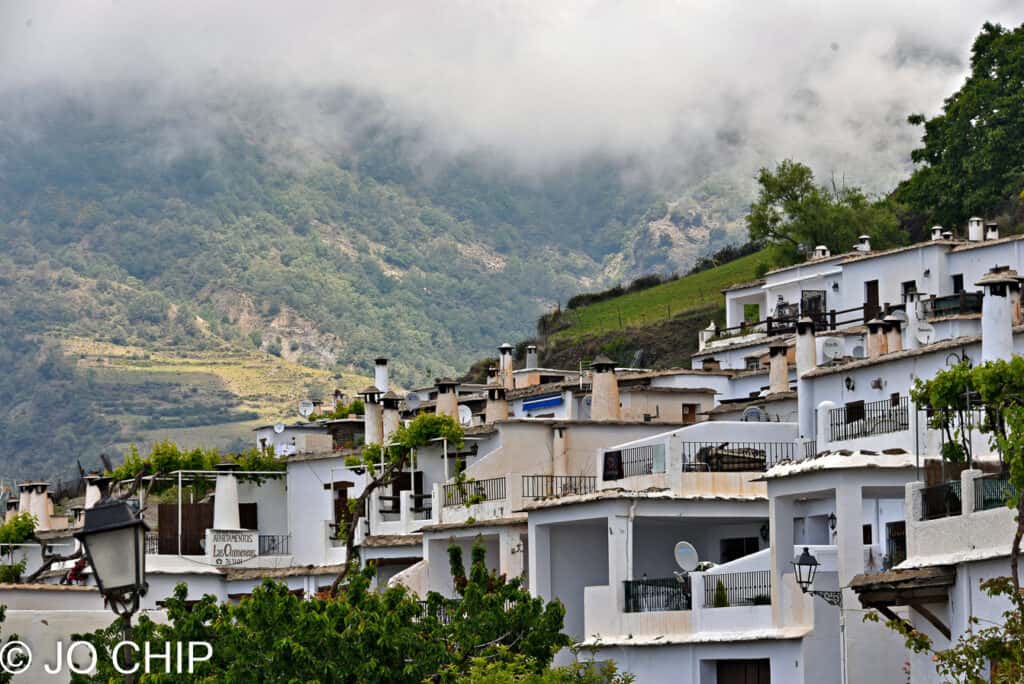LA ALPUJARRA lies on the south flank of the Sierra Nevada mountains, spanning the provinces of Granada and Almería, in Spain’s Andalucia.
A distinctive area characterised by flat-roofed white buildings, waterways, and agricultural terraced land, the Alpujarra has been inhabited since ancient times. It was originally inhabited by the Iberians and Celts. Under Roman rule, small agricultural communities were established in the valleys to supply crops and minerals to larger Roman towns and cities.

After the fall of Rome, the region was conquered by the Visigoths in the 5th century AD. It later came under Islamic rule when Tariq ibn Ziyad led the Umayyad conquest of Hispania in the 8th century. The Muslims introduced an advanced system of irrigation to the semi-arid hillsides, allowing the cultivation of fruits, nuts, and mulberry trees, for silk production. La Alpujarra became part of the frontier territory between the Islamic kingdoms of Granada and Almería. Defended by mountain fortresses, its isolated valleys remained under Islamic rule for over 700 years until the late 15th century.
At this time, the Catholic Monarchs, Queen Isabella I of Castile and King Ferdinand II of Aragon, waged a nine-year military campaign known as the Granada War to reclaim Spain from the Muslims for Christian rule (known as the ‘Reconquista’). By 1482, Christian forces had taken most of Granada, including La Alpujarra. The Capitulation of Granada in 1492 marked the end of the Reconquista. After surrender terms were negotiated, the Muslim leader, Boabdil, handed the keys to the impressive Alhambra Palace, in Granada city, to the Catholic monarchs.

To consolidate their position, the Christian rulers decreed that all Muslims must convert to Christianity or leave. While many converted and stayed, thousands migrated to North Africa. To repopulate the newly conquered lands, the rulers encouraged Christian settlers from other parts of Spain to relocate and occupy the houses and farms left vacant by the exiled Muslims. Many of these new settlers hailed from the north of Spain.
The re-population scheme abruptly altered La Alpujarra’s ethnic, religious and cultural composition. The new Christian settlers tried to impose their religion, language, and customs on to the Muslim peasant population that had remained in the region. Political and religious tensions erupted when the Muslims were prohibited from speaking Arabic, wearing traditional dress, and performing their cultural practices. Heavy taxation and land seizures by Spanish landowners added to the unrest.
In 1501, several thousand Muslims from La Alpujarra staged the Mudéjar Revolt, lead by Francisco Jiménez de Cisneros, a Franciscan friar. They laid siege to Christian towns in an attempt to undermine Catholic rule. The rebels were defeated by Spanish royal forces and were met with heavy repression. Thousands of Muslim homes and farms were burned and many men were executed while women and children were enslaved.
In 1567, the remaining Muslims, known as Moriscos, staged the Alpujarran Revolt against continued repression and attempts to enforce conversion to Christianity. Led by Aben Humeya, they achieved some early victories, but the uprising was brutally suppressed by Don John of Austria, the half-brother of King Philip II. He led a large military force into La Alpujarra, inflicting great violence on combatants and non-combatants alike. By 1571, the revolt had been stamped out through mass executions and deportations.

After the defeat of the second Morisco Revolt, the Christian rulers forcibly expelled the entire Morisco population from La Albujarra and other parts of Spain between 1609-1614. Over 90,000 Moriscos were marched in horrific conditions to ports and ultimately expelled to North Africa, destroying the Morisco community that had lived for centuries under Moorish and Spanish Christian rule. Repopulation schemes brought in new waves of Christian settlers, further influencing La Alpujarra’s ethnic makeup and identity.
The abrupt depopulation caused economic collapse and agricultural decline in La Alpujarra over the 17th-18th centuries. Many mills, terraces, and irrigation structures were abandoned, triggering soil erosion, which washed away fertile topsoil on the mountain slopes. Political instability also hindered the region’s recovery under subsequent repressive regimes. However, the 19th century brought renewed stability to Spain, enabling La Alpujarra to recover some prosperity. Terraces and irrigation canals were rebuilt, enabling the cultivation of olives, grapes, fruits and vegetables.
Today, La Alpujarra retains its remote and scenic beauty, which – despite attracting many tourists – is largely unspoilt and unchanged. The area is buttressed between the towering Sierra Nevada peaks and the Mediterranean coast, with the smaller Contraviesa mountain range comprising much of the Alpujarra ‘baja’ (low Alpujarra) and bordering the Costa Tropical and its tranquil beaches.
A signature feature of the Alpujarran landscape is the patchwork of narrow agricultural terraces lining steep hillsides, fed by an ancient Moorish irrigation system of acequias, dams, and watermills. Traditional Moorish features, such as flat-roofed whitewashed houses and narrow, winding streets, remain to this day.

In modern times, tourism and related sectors are as important to the local economy as agriculture. Various wines are also produced in this area, which is also renowned for its gastronomy and ‘tapas’ (free accompaniments to qualifying drinks).
The unique history of La Alpujarra is reflected through its architecture, music, arts, and cuisine, displaying Iberian, Jewish, Moorish/North African and Spanish Christian influences. Many of today’s village fiestas stage medieval battles re-enactments to represent the conflict between Moors and Christians, etc.
With its rich history, culture, and landscapes, much of La Alpujarra has been designated a national park and UNESCO Biosphere Reserve to protect the environment for future generations to enjoy. From bustling towns to quiet hiking trails, La Alpujarra has a wealth of things to do and see.
READ MORE:
